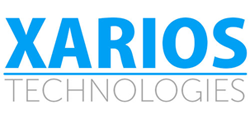

The servers require a 100MB/1GB LAN connection that has access to the network where the telephone system is located and to the users who will require search and playback access. If the server is installed into a Microsoft Active Directory environment then it can be added to the domain and this should be done before the server is made operational by the customers IT administrator.
 |
Custom Active Directory Group Policies can adversely affect the system and they should be tested before going live. |
To enable users to easily access the server with the website role a valid DNS entry should be created that can then be used when browsing to the site, for example: http://communicationserver.
The following firewall ports need to be allowed into the system. Depending on the features and system configuration some of these may not be required.
| Application | Name | Direction | Port |
|---|---|---|---|
| Website access | HTTP | Inbound | TCP 80 |
| Secure website access | HTTPS/SSL | Inbound | TCP 443 |
| FTP | FTP | Inbound | TCP 20/21 |
| LogMeIn | HTTP & HTTP/SSL | Outbound | TCP 80 & TCP 443 |
| SQL Server | SQL Server | Inbound/Outbound | TCP 1433 |
| Communication Gateway | XCG | Inbound | TCP 8088 |
| Application Server | App Server | Inbound | TCP 8087 & TCP 8086 |
| Communication Server (see note below) | WCF | Inbound/Outbound | TCP 8089 |
| See the PBX manufacturers engineering guidelines for more detailed information. | |||
| Mitel OAI | OAI | Outbound | TCP 4000 |
| Mitel MiTAI | MiTAI | Outbound | TCP 8000 & TCP 8001 |
| Mitel SRC | SRC | Inbound | IP 49152 - 65535 |
| Mitel SRC | Connection to MBG | Outbound | TCP 6810 |
| Mitel SRC | Voice streams from MBG | Inbound | UDP 30000-40000 |
| Mitel SMDR | Call Logging from MiVoice Office 400 | Inbound | TCP 1080 |
 |
To network 2 recorders add 8089 WCF port to the Firewall rules after installation |